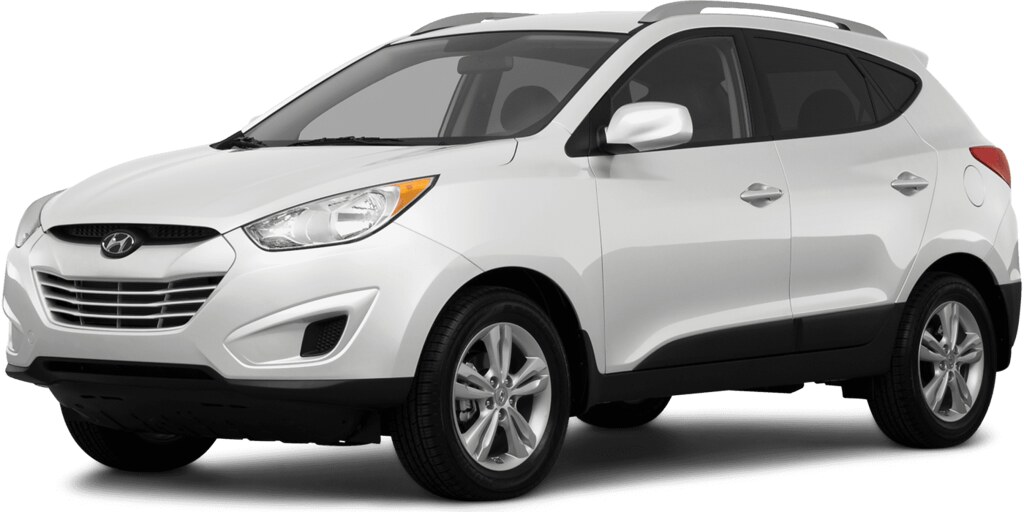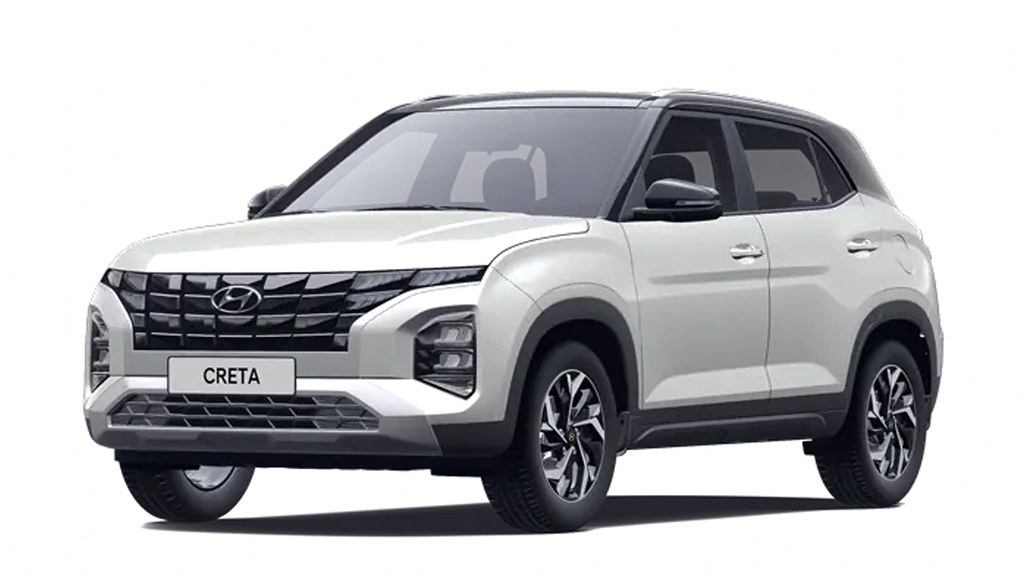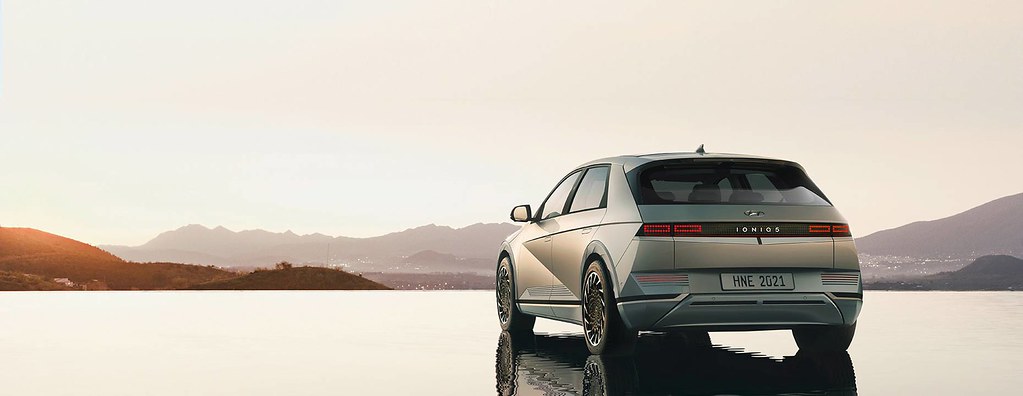It’s mighty impressive when you consider that Hyundai has transformed from a relative wallflower in automotive design to industry styling leader in virtually just a decade. With the exception of the curvaceous Hyundai Coupe and the game changing Starex van of the mid- to late 90s, most Hyundai cars had understated designs that looked good but weren’t standouts by any measure.
Hyundai Coupe 1997 Hyundai Starex
Then Hyundai introduced its flowing and dynamic Fluidic Sculpture design language in 2010. The bold hexagonal grille and the distinctive sweeping curves and sharp character lines catapulted the Tucson from just one of the compact SUV players to a bestselling standout. Ditto the Sonata that inarguably became one of the most beautiful executive sedans on the road.
Hyundai Tuscon 2010
Hyundai followed that up with Fluidic Sculpture 2.0 in 2014, adopting it to a wider range of vehicles. The hugely popular Accent and Elantra sedans as well as the Santa Fe midsize SUV were all recipients of this new visual brand language.
Hyundai Sonata Hyundai Santa Fe
Global design—Hyundai’s styling backstory
Hyundai’s design renaissance began when the automaker established the Hyundai European Design Centre in Russelsheim, Germany in 2001 and followed that up with the Namyang Design Centre in South Korea in 2003.

A pivot to a European design direction was nothing new to the Korean brand. One of their most iconic and globally successful models is the Pony, which debuted at the Turin Motor Show in Italy in 1974. That seminal Pony—Hyundai’s first mass-produced model—was designed by no less than legendary Italian automotive designer Giorgetto Giugiaro. The Pony would become the inspiration of an important Hyundai model that would appear almost half a century later.

Yet another example of Hyundai’s dalliances with European designers is, ironically, its work with Pininfarina—Giugiaro’s archrival and a long-time Ferrari designer for over half a century. You can still see Pininfarina’s brand logo beneath the rear quarter window of the Hyundai Matrix, a uniquely designed small hatchback/MPV that become quite popular on Metro Manila roads in the early to mid-2000s.
Sensuous Sportiness—Hyundai’s design language post-Fluidic Sculpture
So what’s next after the phenomenal success of two generations of Fluidic Sculpture? The world had by now acknowledged Hyundai as a leader in automotive design. And the Korean giant was brimming with stylistic confidence.
This is the time for a revolution. This is the time for Sensuous Sportiness. A time when a new generation of Hyundai sedans and SUVs would turn the world’s roads and highways into veritable fashion runways.
It was also a time for sheet metal to showcase Hyundai’s pioneering spirit. A time when small, affordable crossovers could become highly desirable automobiles, not just for buyers of entry-level cars, but for every demographic—which is what happened to the Kona and now the Creta.
Hyundai Creta Hyundai Palisade Hyundai Santa Fe
The Santa Fe and Palisade premium SUVs command attention as they stand shoulder to shoulder in parking lots beside fellow SUVs from European luxury brands.
Hyundai Stargazer Hyundai Palisade
Humble people movers? The futuristic Staria and Stargazer have transformed the people-mover from a one-box transportation module into a museum-worthy design statement on minimalism.
Which brings us to Hyundai’s interpretation of tomorrow’s mobility: electric vehicles.
Hyundai IONIQ 5
EVs are at the forefront of future mobility. And Hyundai’s contenders—the IONIQ 5 and IONIQ 6—are true vanguards of the genre. Proof? No less than the prestigious 2023 World Car Person of the Year honors was accorded to Hyundai Motors’ Sangyup Lee, who is the head of the Hyundai and Genesis Global Design Center. The award was given by the prestigious World Car Awards organization.

Sangyup Lee is the visionary who spearheaded the development of various Hyundai models such as the stunning all-new Kona, the ground-breaking Hyundai N Vision 74, and the innovative IONIQ 5 and IONIQ 6. Lee was chosen by the World Car Awards jury panel, which consists of 100 journalists from 32 countries, for his “strong design philosophy, vision, and leadership,” which according to the organization, were “instrumental in shaping Hyundai’s new design language, as demonstrated by the brand’s recent successes.”
Lee’s award comes back to back from the previous year when Hyundai Motor Group Chief Creative Officer and President for Design Luc Donckerwolke was voted World Car Person of the Year in 2022. What is Donckerwolke’s claim to fame? Aside from overseeing the design of several flagship Hyundai and Genesis models, the Belgian designer also penned the sensational styling of the Lamborghini Diablo, Murcielago, and Gallardo before joining Hyundai in 2015.
And now that the IONIQ 5 and IONIQ 6 have landed on Philippine shores, it’s time to witness the suprising divergence in each car’s exterior design.
While the IONIQ 5 is all flat panels and angular lines in what Hyundai describes as Parametric Pixel (in reference to the novel Parametric Pixel headlamps and taillamps of the electric vehicle), the IONIQ 6 goes Electrified Streamliner with its almost Porsche 911-like sweeping curves and curvilinear style. Two vastly different design directions with the same spectacular result.
That a carmaker can offer two roughly similar concepts (at least in terms of dimensions, powertrains, and capacity), yet package them in diametrically opposite design themes speaks volumes on the depth and breadth—not to mention the confidence and self-assurance—of an inspired brand that is leading the way in global automotive design.
One thing is for certain—the customer—and the world—wins. After all, one can be stuck in traffic while ogling any of Hyundai’s four-wheeled sculptures in metal, glass and plastic. How bad can that be?
Photos from Hyundai Motor Philippines
























